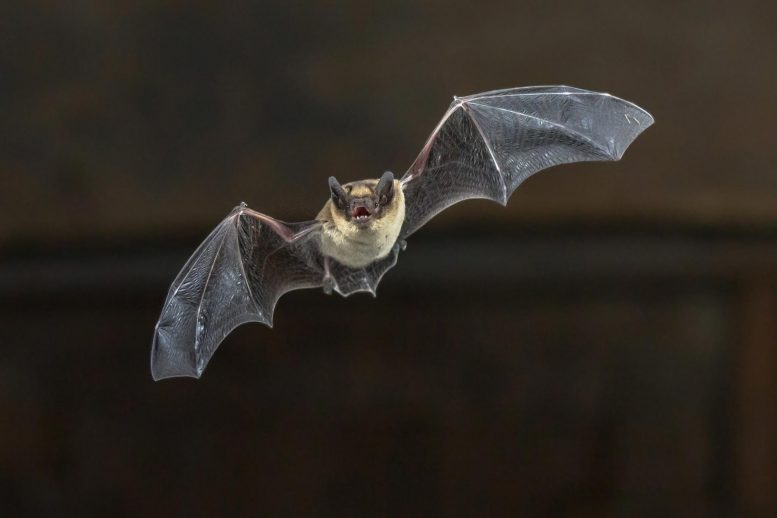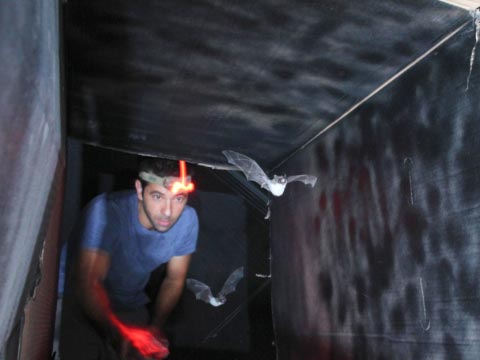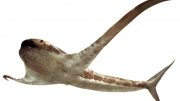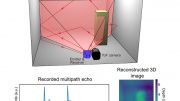
Bats map the world in units of time
A new Tel Aviv University study has revealed, for the first time, that bats know the speed of sound from birth. In order to prove this, the researchers raised bats from the time of their birth in a helium-enriched environment in which the speed of sound is higher than normal. They found that unlike humans, who map the world in units of distance, bats map the world in units of time. What this means is that the bat perceives an insect as being at a distance of nine milliseconds, and not one and a half meters, as was thought until now.
The study was published in PNAS.
In order to determine where things are in a space, bats use sonar — they produce sound waves that hit objects and are reflected back to the bat. Bats can estimate the position of the object based on the time that elapses between the moment the sound wave is produced and the moment it is returned to the bat. This calculation depends on the speed of sound, which can vary in different environmental conditions, such as air composition or temperature.
For example, there could be a difference of almost 10% between the speed of sound at the height of the summer, when the air is hot and the sound waves spread faster, and the winter season. Since the discovery of sonar in bats 80 years ago, researchers have been trying to figure out whether bats acquire the ability to measure the speed of sound over the course of their lifetime or are born with this innate, constant sense.
Now, researchers led by Prof. Yossi Yovel, head of the Sagol School of Neuroscience and a faculty member of the School of Zoology in the Faculty of Life Sciences and his former doctoral student Dr. Eran Amichai (currently studying at Dartmouth College) have succeeded in answering this question.
The researchers conducted an experiment in which they were able to manipulate the speed of sound. They enriched the air composition with helium to increase the speed of sound, and under these conditions raised bat pups from the time of their birth, as well as adult bats. Neither the adult bats nor the bat pups were able to adjust to the new speed of sound and consistently landed in front of the target, indicating that they perceived the target as being closer — that is, they did not adjust their behavior to the higher speed of sound.
Because this occurred both in the adult bats that had learned to fly in normal environmental conditions and in the pups that learned to fly in an environment with a higher-than-normal speed of sound, the researchers concluded that the rate of the speed of sound in bats is innate — they have a constant sense of it. “Because bats need to learn to fly within a short time of their birth,” explains Prof. Yovel, “we hypothesize that an evolutionary ‘choice’ was made to be born with this knowledge in order to save time during the sensitive development period.”
Another interesting conclusion of the study is that bats do not actually calculate the distance to the target according to the speed of sound. Because they do not adjust the speed of sound encoded in their brains, it seems that they also do not translate the time it takes for the sound waves to return into units of distance. Therefore, their spatial perception is actually based on measurements of time and not distance.
Prof. Yossi Yovel: “What most excited me about this study is that we were able to answer a very basic question — we found that in fact bats do not measure distance, but rather time, to orient themselves in space. This may sound like a semantic difference, but I think that it means that their spatial perception is fundamentally different than that of humans and other visual creatures, at least when they rely on sonar. It’s fascinating to see how diverse evolution is in the brain-computing strategies it produces.”
Reference: “Echolocating bats rely on an innate speed-of-sound reference” by Eran Amichai and Yossi Yovel, 5 May 2021, Proceedings of the National Academy of Sciences.
DOI: 10.1073/pnas.2024352118











Makes much sense. Bats live/fly/hunt in the dark; exploit/operate in a 3-dimensional framework[over]time; where time delay between send and return=distance as a function of frequency(doppler)shift, as a first “pulse”. But they are in motion when they hunt. They emit these pulses continuously, and shift (glissandi +/-) the frequency within an algorithmically fixed range, wherein differential return rates refine the “image”, the image size, configuration and exact location = “tuned-in” to a “fluid” environment. In this manner, bats can pick out a specific, juicy moth from a cloud of moths. As my Great Uncle, Thomas Arthur, opined: “There is much to be learned in sitting quietly, looking and listening as Nature/Night closes in. Of course, it also helps to have an oscilloscope and a strobe along.” This “batty” paradigm (that word again) of “vision”/Navigation formed the basis of modern SONAR.
Humans, on the other hand… have a size/distance sense based on BODY PARTS (thumbs, hands and FEET), “see” in 3-dimensions but (too) often confine their sense of SPACE (the final frontier), and their BASIC perceptions and reasoning capacity to two-dimensions (X/Y). To wit: linearities as opposed to “coordinated” or integrated “spaces” (X/Y/Z[over]TIME.
RACK OF EYE (a shipbuilders’ and loggers’ term) is a significant exception. Some shipwrights could detect a variance of 1/32nd-inch in 40 feet, along the edge of a finished timber. Some loggers could (and still) estimate the height of a tree within an inch or two by the same method.
Anyway… illuminating article. One instance of cognitive dissonance: I was under the “impression” that, the more dense a medium, the faster sound travels through it. Try the “Brick Wall” method. You can try this at home: Station a friend at one end if a brick wall, yourself at the other. Press your right ear to the wall. Have the friend tap on the wall with a large, metal soup ladle. You will hear the sound in your right ear (wall side) before it reaches your left ear. Go have a bowl of soup for lunch with your friend… Speaking of which… The grandfather clock in the front hallway is tolling the dinner hour. I know it’s in the front hallway because I saw it there, the last time I came in through the front door. MEMORY has its compensations…🧓
“Evolutionary choice” by “whom,” evolution or the bats. Either way, evolution does not have a brain to think about such significant choices, nor does a bat. Billions of such difficulties arise when studying earth’s life forms, the metamorphosis of caterpillar to butterfly being one, for example. There has to be another explanation. But in their bias towards a predetermined closed system and material naturalism, scientists will never find the ultimate answers to what is behind these amazing discoveries. “In the beginning God…”
I have bats in my ceiling how do I get rid of them? I don’t want to kill them but it’s looking like that’s my only option I block 1 hole they find another, it’s really frustrating and they stink !